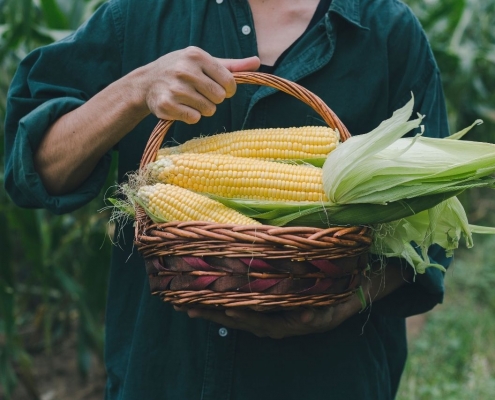Climate-smart ag strategies may cut nitrous oxide emissions from corn production
PENN STATE
For corn, using dairy manure and legume cover crops in crop rotations can reduce the need for inorganic nitrogen fertilizer and protect water quality, but these practices also can contribute to emissions of nitrous oxide — a potent greenhouse gas.
That is the conclusion of Penn State researchers, who measured nitrous oxide emissions from the corn phases of two crop rotations — a corn-soybean rotation and a dairy forage rotation — under three different management regimens. The results of the study offer clues about how dairy farmers might reduce the amount of nitrogen fertilizer they apply to corn crops, saving money and contributing less to climate change.
The results are important because although nitrous oxide accounts for just 7% of U.S. greenhouse gas emissions, it is significantly more potent than carbon dioxide or methane when it comes to driving climate change, according to Heather Karsten, associate professor of crop production/ecology in the College of Agricultural Sciences. Nitrous oxide is almost 300 times more powerful than carbon dioxide and remains in the atmosphere for more than 100 years.
Researchers compared the effects of three management treatments for no-till corn and measured nitrous oxide emissions throughout the corn growing season. In the corn-soybean rotation, the team compared nitrous oxide emissions from broadcasting dairy manure, shallow disk manure injection, and the application of inorganic fertilizer in the form of liquid urea ammonium nitrate.
Manure was applied before corn was planted, as most farms do, while in the inorganic fertilizer treatment, fertilizer was applied according to recommended practices — when the corn was growing and taking up nitrogen.
This better timing for nitrogen application allowed for a reduced total nitrogen application, and the nitrous oxide emissions were lower than with the injected manure treatment. Injecting manure increased nitrous oxide emissions compared to the broadcast manure treatment in one year of the study, indicating that the environmental and nitrogen-conservation benefits of injection should be weighed against the additional emissions when selecting the practice.
The researchers also compared nitrous oxide emissions from corn grown for silage or grain in the no-till, six-year, dairy forage rotation in which corn followed a two-year, mixed alfalfa and orchardgrass forage crop and also a crimson clover cover crop. Manure also was broadcasted before corn planting, and nitrous oxide emissions were compared to the rotation in which corn was planted after soybean with broadcast manure. The nitrous oxide emissions during the corn season didn’t differ among the three prior legume treatments.
> Source: EurekAlert!



 Credit: https://www.ecolife.zone/water-conservation/
Credit: https://www.ecolife.zone/water-conservation/ Credit: Unsplash/CC0 Public Domain
Credit: Unsplash/CC0 Public Domain